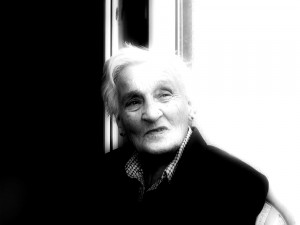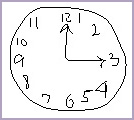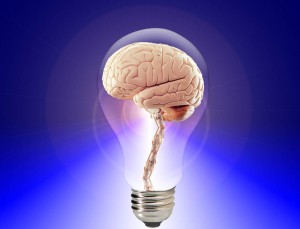How to test for it
Diagnosing or testing for Alzheimer Dementia is not easy. When elderly people start to become a little forgetful, that does not mean that they have Alzheimer’s – they may just have a ‘senior moment’ and for people over 65 that is not so unusual.
Significant cognitive and memory loss are not symptoms of normal aging. However, these symptoms do not always indicate Alzheimer’s disease. Other conditions can also cause mental decline.

TRADITIONAL TESTING:
There does not seem to be a single definitive medical test for identifying Alzheimer’s disease. Diagnosing Alzheimer’s by a doctor or a specialist requires a detailed evaluation, including:
- A good history of symptoms from the patient and spouse or family, identify the strange behaviour, the level of memory loss etc. Determining classic patterns can help your doctor eliminate other causes of Alzheimer’s symptoms.
- A physical and neurological exam, including cognitive tests to assess such things as orientation (ability to recall details about self, place, and time), attention span, speed of information processing, working memory, and mood and personality.
- Other tests, such as brain imaging and blood tests, to rule out other medical causes.
To diagnose Alzheimer’s disease from your symptoms, a doctor will look for:
- Significant memory problems in immediate recall, short-term, or long-term memory.
- Significant thinking deficits in at least one of four areas: expressing or comprehending language; identifying familiar objects through the senses; poor coordination, gait, or muscle function; and the executive functions of planning, ordering, and making judgments.
- Decline severe enough to interfere with relationships and/or work performance.
- Symptoms that appear gradually and become steadily worse over time.
- Other causes to be ruled out to ensure memory and cognitive symptoms are not the result of another medical condition or disease, such as mild cognitive impairment.
DNA TESTING
Since our family has a lot of Alzheimer Dementia, I participated in a study at the Free University in Amsterdam. By investigating the genes in your DNA they can determine if you are more likely to contract the disease later on in life. By taking a blood sample and analyzing specific genes in the DNA structure, an analysis is available. 
For Alzheimer they examine the PSEN1, PSEN2 and APP gene and a mutation may be an indicator for Alzheimer’s (inherited from the family). Testing for Alzheimer’s using this method can be very confronting.
I know some people where their family has these genetic mutations and they would prefer to not know if they have these same mutations. They see it as a ticking time bomb.
As there are now so many preventative measures that you can take – I would suggest that knowing will help you focus on following all prevention techniques. The DNA testing may not be available in every country and in some countries you may have to pay for the test yourself.
SIMPLE TESTING
- The best thing to do if you are not sure if you have this disease is to go and talk to your doctor. Before you go there, make a list of all the things that concern you. Things like the changes you have noticed yourself in your ability to remember things and any other thought issues that you have noticed yourself.Take a family member or a close friend with you – so that they may be able to answer any questions that you cannot. From there the doctor may do some further assessments, or may refer you to a specialist or a geriatrician, or even a neurologist.
- Another test that I have seen used is to simply ask the person to draw a standard clock (the old fashioned ones with dial) and to write the number of hours in the clock itself. People with Alzheimer dementia have great difficulty correctly drawing and spacing the numbers around the dial. Now – please do not use this test in isolation as a sign that the person has dementia. Some people simply cannot draw all that good. But if they were able to draw a clock some time ago – and have difficulties now – then you do have an indicator.

- Cognitive testing can also be performed by your doctor or another person who has these testing abilities. The cognitive tests can be used to measure and evaluate thinking tasks, such as memory, problem solving, counting and language skills or even visual/spatial awareness and concentration ability.
- Perhaps a little controversial, but a graduate at Florida University’s (McKnight Brain Institute Center for Smell and Taste) has been testing people with a “Peanut Butter Test”. She came up with this idea while working with Dr. Kenneth Heilman, one of the world’s best known behavioral neurologists, from the UF College of Medicine’s department of neurology.
The ability to smell is associated with the first cranial nerve and is often one of the first things to be affected in cognitive decline. Using peanut butter is a ‘pure smell’ that is only detected by the olfactory nerve and is easy to access.The study she performed was with a group of people who had mild cognitive impairment.
When she did the test, she asked each person to close their eyes (or use a blindfold) and mouth and to hold one nostril closed (with a finger) while breathing normally through the other nostril.Holding a ruler close to the open nostril, a teaspoon of peanut butter is moved towards the open nostril and the measurement is noted as soon as the person recognizes the distinctive smell of the peanut butter.
Then after about 2 minutes the test is repeated with the other nostril again measuring the distance at which the person recognizes the smell.What they found was that people with Alzheimer Dementia (which was confirmed by other clinical tests) that the left nostril is impaired to the point that the spoon would be on average at least 10 cm closer than the right nostril. While it is still an experimental test which is being assessed at the university, it is a simple test that can be fun to do.
BRAIN IMAGING
When your specialist wants another opinion he/she could request a MRI or CT scan, which provides a structural image of the brain. These tests are also carried out to rule out other possibilities, like tumors or large or small strokes or other head trauma and even build up of fluid on the brain. Once this becomes a common practice, early detection will become much easier.
Hi John, This is really valuable information. It’s a very hard topic to write on, especially if it’s a personal one. I wish you the best. Thanks for offering education to those who want to know more.
Best, Marcel
Thanks a lot Marcel – I hope to build on this topic for quite a while to come.
Hi John, You have some excellent information here. My mom is 92 and is has been living with us for about a year and a half. I am home with her everyday because thank God I work from home part time. She is more or less self sufficient physically, but has some walking problems and uses a cane. We do most of the cooking but she makes her own breakfast. She goes to some of the Senior Centers and loves interacting with other seniors. She misses being able to Line Dance, of all things. She just holds on to the couch or counter though.
She has a hard time remembering names, but she says she does not feel bad because no one else can remember names either at the center. 🙂
Anyway, I could go on and on but I just wanted to say the “peanut butter” test is very interesting and I may try it on her just for fun.
Thanks John and I will be visiting again and let my friends know as they also have aging parents.
Rosalyn
Hello Rosalyn,
Thanks for the feedback. The peanut butter test is indeed meant to be a bit of fun – but does have a serious implication as well.
A more reliable Alzheimer test is to ask the elderly person to draw a normal clock – with the numbers 1 to 12 inside the dial – and may be ask them to draw the hands showing 3:00 o’clock. I just learned last week that this is a pretty standard test they do here in Australia. People with dementia have great problems getting this right.
In the next few weeks I hope to share some really encouraging research – just getting a few more sources to verify the info.
Cheers,
john.
Thanks so much for the reply. I will try the clock test also.
Rosalyn